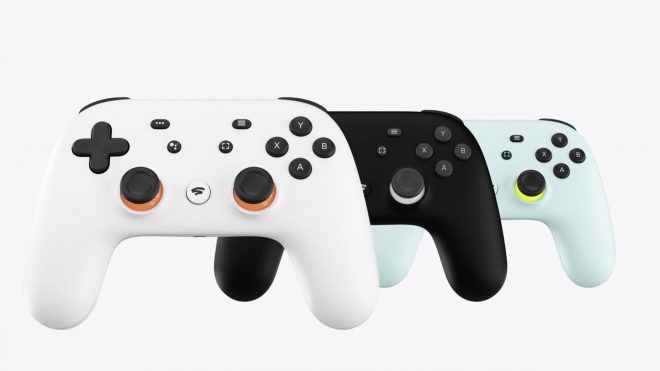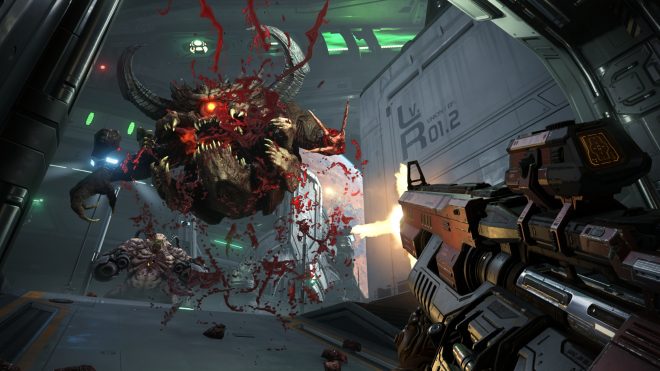Cognition Dissemination: Google Stadia, and the Beginning of the Video Game Streaming Wars

It feels like gaming industry types have been championing the potential for video game streaming for over a decade now, promoting how it will be the future of the medium thanks to the ease in which players will be able to immediately access titles and stream them. Several companies have given it an honest shot in that time. Microsoft and Sony have Xbox Game Pass and PlayStation Now, though the former’s utilization of it has been better than the latter’s thanks to how willing they’ve been to make newer games playable on the platform. In both cases, though, the lineups still don’t compare to those they publish at retail, since they’re not willing to make every new game available through the services.
This past week, though, we saw the reveal of the most serious video game streaming effort yet: The Google Stadia.

It’s no surprise that one of the biggest tech companies on the planet will soon have perhaps the most robust streaming platform around. During the conference at the Game Developers Conference on Tuesday, Google’s Phil Harrison (previously of Sony and Microsoft — you might remember him) ran down how they aim to change the future of how we play games. Stadia will be playable on PCs, laptops, phones, tablets, and TVs, and is promised to present games in a quality that’s at least on par with the most powerful current PC gaming rigs. As in, it will be far more powerful than the PlayStation 4 Pro, and beyond the Xbox One X.
The main game displayed during the presentation was Assassin’s Creed Odyssey, also the title used for the Project Stream beta testing session, the prelude for Stadia. The game ran at an impressive 1080p and 60fps, far better than it did on some consoles. It was even more impressive to see how a game can be paused on one display or device and easily resumed on another, and how games will play in good quality regardless of how powerful the PC or laptop is. Google aims to have titles that run in 4K quality, and 8K when it’s feasible.
There are early signs that Stadia could have a rough launching period, though. For one, only four games were confirmed to release for it. In addition to the aforementioned AC Odyssey, Doom Eternal is the only other concrete game confirmed for the platform. Q-Games confirmed they’re working on a title, but didn’t provide any specifics. First-party titles developed either internally at Google or by development partners should help it stand out, but there’s a question of what kinds of games will be feasible and how long they’ll take to arrive.
No, the name probably won’t hurt it. “Stadia” sounds odd at first, but so did Wii when Nintendo first introduced it in 2005, a system that sold incredibly well. It could be the kind of name people simply adjust to saying. Also, only nerds like me will get the name confused with Bandai’s ill-fated Japan-only Playdia, thanks to the somewhat similar name and several jokes about it.

Whether a steady amount of games come to Stadia from third-party publishers will depend on how interested consumers are, but that’s difficult to gauge when the pricing and plans aren’t currently known. Google plans to share more info in the summer, and expectations will be high for their next presentation.
The Stadia will only be the latest streaming platform when it arrives, but will mark the biggest escalation in the streaming wars. In addition to Xbox Game Pass and PS Now, it will also compete against the Nvidia GeForce Now and the Blade Shadow. However, the former has been in beta for nearly four years now, while the latter is for games and other features, so neither of them are anywhere near as serious an effort as Stadia will be. There’s also Microsoft’s Project xCloud, a service primarily made to stream games on mobile devices that’s intended to complement Xbox Game Pass and Xbox One/Windows 10 instead of being a competitor.
There are also rumors that Walmart is planning on entering the video game streaming market, though how serious their effort will be is a big question mark. Just think about how there could be even more from here, and realize how this could be a hell of a war between streaming services.
The services will also have another key opponent: The United States’ pitiful internet infrastructure. The bandwidth requirements to run games at 1080p or higher and 60fps through streaming will be high, and some parts of the country aren’t equipped to run anything even close to that quality. This will be feasible in the biggest cities in the country, but good luck to anyone who lives in smaller urban cities, some suburban environments, and especially rural townships. This also isn’t getting into how the playing field may not be even, thanks to the repeal of net neutrality. Some services may run better than others if they pay internet service providers, and it will be even worse if the amount they have to pay is subsequently passed on to consumers.
The streaming wars will start off a little rough thanks to the above matters, and playing games locally will still be the way to go for a while. Even when this format does take off, hopefully the local option will stick around for those of us who like owning our games. It’s not too big of a concern thanks to how streaming options for movies and TV shows haven’t killed physical options, though they’ve certainly done serious damage. Game preservation is important, thanks to how bad game publishers are at maintaining archives of their titles, and it would be better for anyone heavily invested in the hobby that we don’t lose complete ownership options for several games.
It’s going to be a hell of a ride in the future for streaming, and we’ll learn just how bumpy it will be in the coming months.





